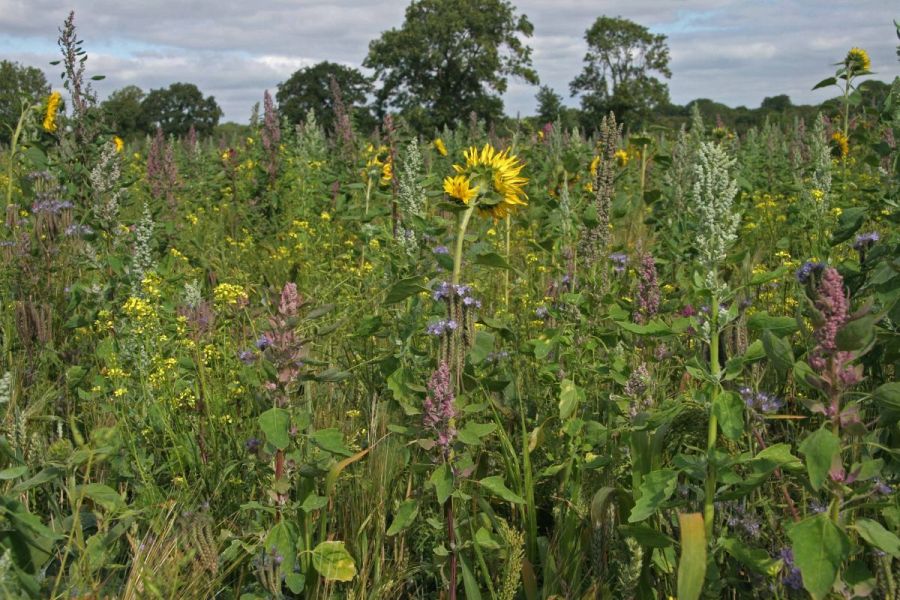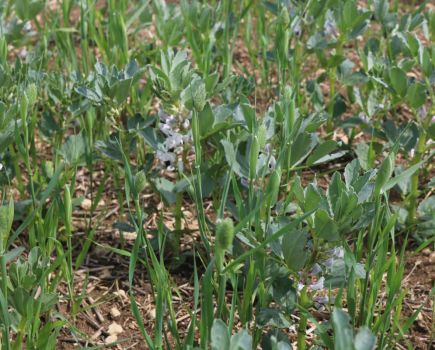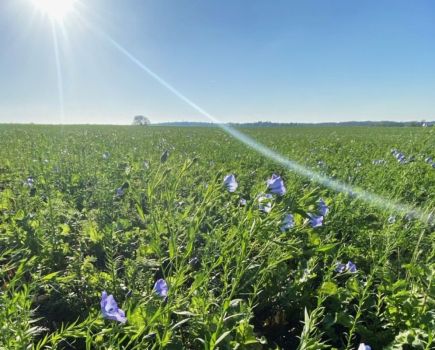With the government demonstrating it can easily move the goalposts when it comes to SFI, concerns are being raised regarding potential abuse of the system. CPM shares perspectives of those at the coalface.
“It’s weighing up doing the right thing versus finding a way to survive.”
By Janine Adamson
Back in March, Defra revealed that a small number of producers – around 1% of those who applied for SFI in 2023 – entered 80% or more of their farm into actions that take land out of food production.
Alongside this it was explained that: “While flexibility and freedom of choice are important features of SFI, this goes further than is necessary. And, in the context of economic volatility and challenging weather conditions, there’s a risk that this could become more of an issue.”
As a result, a cap has been enforced on six of the actions, limiting them to no more than 25% of a farm’s total land. The restrictions apply to IPM2 (flower-rich grass margins, blocks or strips), AHL1 (pollen and nectar flower mix), AHL2 (winter bird food on arable/horticultural land), AHL3 (grassy field corners and blocks), IGL1 (improved grassland field corners or blocks out of management) and IGL2 (winter bird food on improved grassland).
The over-riding message behind Defra’s cap announcement was that government wants to protect and improve the environment, food production and food security, without SFI being used in a negative way.
And although the vast majority of growers haven’t gone as far as the 1% cited by Defra, SFI consultant Paul Pickford says he has heard mutterings of somewhat spurious activity. “Equally, the government has shown it’s quick and easy to change the rules, so it’s important to not do the wrong thing or abuse the system.
“It is a concern – we don’t want to mess this up. It’s far from a perfect scheme but it has great potential, however for many, it’s weighing up doing the right thing versus finding a way to survive.”
Wildlife farming consultant, Marek Nowakowski, believes as long as the pendulum keeps swinging from one extreme to the other, farmers will continue to be caught in the middle. “In my opinion, the problem with the old HLS/ELS scheme was the way the RPA interpreted the prescription as they rigorously carried out inspections to the letter with a lack of practical interpretation and understanding.
“There was little flexibility within that which meant farmers were often stung for misinterpretation – which could be attributed to the use of non-farmer-friendly prose and a disconnect between science and on-farm practicality,” he explains.
“Whereas now, SFI offers a very relaxed approach and farmers have been left alone to get on with it. There’s now too much freedom which has left many floundering; farmers require guidance on matters relating to best practice in delivering biodiversity gains.”
Paul Pickford agrees that there are obvious aspects of SFI which have been left vulnerable to exploitation, whether that’s knowingly or not. “An example of poor implementation would be establishing a winter bird food crop (AHL2) in July/August following winter barley or an early harvested winter wheat.
“Planting at this point in the season means the crop flowers late, produces little food and therefore is of little benefit to the birds. Whereas the action states it should produce nectar/pollen in the summer as well as seed in the winter,” he explains.
Furthermore, he says the reason why this particular action pays well is because it’s meant to compensate for a lost harvest. “It’s a big number so is very attractive but it must deliver on its purpose and fill the wildlife hunger gap. Of course, this action is now limited as part of the 25% cap.”
However, Alcester farmer Paul Wilson hasn’t taken this approach, instead opting to plant small amounts of AHL2 on less productive areas. “We’re keen to achieve the desired outcome. It’s proven that it hasn’t taken long for the government to catch onto poor practice. The beauty of SFI is its flexibility and we don’t want to lose that,” he says.
“There’s also less paperwork than before and there seems to be less bureaucracy. Yes we want to max it out as far as we can to replace BPS, but the more it’s abused, the greater the chance of more red tape again. That’s exactly what we don’t want,” stresses Paul Wilson.
Another example watch-out from Paul Pickford is weighing up companion cropping at £55/ha (IPM3) versus a multi-species cover crop at £129/ha (SAM2). “To deliver on SAM2, growers have to sow a mix containing at least two species from one or more of the stipulated plant families. It also has to be sufficiently well-established to protect the soil surface for the whole of winter.
“Some might decide to use a cash crop as one of these species, and thus claim the higher payment of SAM2 rather than it being a companion crop. Whereas this might comply on paper, it’s not necessarily the best application of a multi-species cover crop in terms of soil health benefits,” he explains.
According to Paul Wilson, it’s currently too easy to simply tick a box rather than go the extra mile. “As farmers we want to do a good job, but from a commercial perspective, it involves spending the minimum to deliver an adequate outcome. There’s simply no incentive to do more at the moment,” he says.
In agreement, Paul Pickford says it’s a missed opportunity to not reward based on results and that he knows plenty of farmers who would take pride in doing a great job.
Marek believes the answer lies in a sliding scale. “Not only should there be adequate guidance to ensure correct interpretation and delivery, but payments should be flexible. It doesn’t have to be difficult to police either – technology is now available through phone apps for growers to self-report and monitor which would enable better rewards for successful delivery.”
Equally, Marek has concerns for the future governance of SFI if questions continue to be raised. “The Office for Environmental Protection (OEP) was established when the UK left the EU as a means of monitoring our environmental deliverables.
“OEP is a non-departmental public body sponsored by DEFRA – I should imagine that it won’t take long for this office to start proactively monitoring farmers and their application of SFI,” he warns.
However, Paul Wilson stresses that he believes most farmers will be using SFI to make more of the least productive areas of land, rather than going all-in. “We’ve also opted for the options which seem easiest to establish and be successful to help to grow our confidence. Taking this approach has also revealed the most productive cropping land which can only be a positive thing,” he says.
But conversely, Paul Wilson understands why some might have pushed things too far. “We’re geared up to be a commercial farming business so have used SFI to streamline activity and make the most of what’s left. However, I can understand other perspectives and the temptation to use SFI as an ‘out’ particularly this year,” he adds.
Overall, Paul Pickford believes SFI is an improvement on former environmental schemes but worries that without a collective aim to do the right thing, progress may go backwards.
He says advisors will be playing an important role in decision making. “SFI was designed to be undertaken by farmers but in reality, most do require some help to navigate through it all. But for some of the options such as no insecticide (IPM4), many are already operating that way which makes it an easy win,” comments Paul Pickford.
And if as with many government policies, SFI ends up on the cutting room floor, Marek fears lessons learned won’t be passed on. “The government has invested more money into this than ever before but it’s uncertain why we had to start completely from scratch.
“There has to be a meeting of minds to go beyond the food-farming-wildlife disconnect we currently find ourselves in. We have to pass on knowledge through generations or through each scheme, to ensure the best parts of what we’ve learnt will continue,” he says.
“We will get to a place where food production and wildlife exist harmoniously, but it just has to happen a little quicker, not helped by the fact policy is continually torn up and re-done. It’s so possible to achieve, I’m frustrated because the science shows us it’s possible to have your cake and eat it,” concludes Marek.
This article was taken from the latest issue of CPM. Read the article in full here.
For more articles like this, subscribe here.
Sign up for Crop Production Magazine’s FREE e-newsletter here.




